The cicadas had picked up their fierce, pulsing chant, the sound of heat – I could feel it in my teeth. I was in new territory: all day I had driven beyond road signs counting down the k’s to places I’d never been. With regret I’d passed by the turn-off to the Bemm River, the Bellbird Hotel. But now I was in the middle of an empty campsite, within cooee of crashing surf, submerged in cicada song. As I got out of my car, I scared a lace monitor. Almost two metres long, it clambered up the blackened bark of a eucalyptus.
I was in country that been burnt in the bushfires of summer 2019-2020. I had seen the violet fuzz of scorched hills from a distance. Five years on, greenery colonised the ground once more, and the trees were vibrant with leaf. It was a terrific time for wild blossoms. On the bluff, there were flowers of every shape and colour. Some I recognised, but others were entirely new to me.
Along the roadsides of eastern Victoria, I’d observed dead wombats – roadkill – which had been slashed with spraypaint, marked by a vivid pink cross. I was eventually told that this was done by wildlife carers, who checked the pouch of each carcass and left an X over it to inform others that they don’t need to stop. Perhaps it is a useful practice, but I admit that I had first seen it as the work of a culture which does not have any sensitivity towards the death of other animals. I know that I couldn’t vandalise any creature’s corpse.
On the headland, I designated a certain gully as the spot where I’d turn around, so I could go back to camp and make dinner. The vegetation was densely overlaid, but a hollow passage had been made through it, the shape and size of wombats’ bodies, and a cube scat had been placed on a stone. I thought of the deceased that I’d seen on the side of the highway and composed a small poem, which I read aloud – a sort of ceremony or ritual that allowed me then to turn back to my Trangia and tent:
You, who bustled your way so often through the undergrowth -
maybe now you’ll find a path through scrub, though it’s probably thicker
than this clump of fireweed, sedge, goodenia and blackberry.
It was also mating season for the lace monitors. At one point, I heard the sharp noise of dry bracken getting broken. An affronted lace monitor glared back at me from its bed of tangled yellow vines. I immediately thought it was a heavyweight, the biggest goanna I’d ever seen. Then I realised it was not one, but two lace monitors. There was thirty kilos of reptile in the dodder laurel: frustrated, I thought, annoyed, and perhaps a bit embarrassed. I wished I could write a verse in homage for the lovestruck lizards, but somehow it is easier to write poetry for the dead.
I have been on Australia’s mainland for much of the past three months, which is unusual for me. The pretext is that I’m trying to introduce my work to a wider audiences, but – as poets will – I have spent more time in less-populated places, taking notes and telling myself that it too is part of the task at hand.
My season on the big island began when I came home from overseas travels in August. The timing worked out that I could visit a mate in Halls Gap, a town huddled under the sandstone range known as Gariwerd or the Grampians. One morning we scrambled up to a summit and watched the sun rise like a blooming orange bottlebrush on the horizon, giving the bluffs all around us a luminous tint. A cohort of corellas cruised below us, their calls like skidding rubber.
It is not always that a mountain view affords me an epiphany (I usually get more out of being nestled in forest or hanging out alongside running water) but at the intersection of the end of a chapter, and the beginning of another, it sometimes can be useful to have a large view, to map out the land around you with a bird’s-eye view.
These trips were made whole by birds. It is tempting to make a list, but I am not exactly a twitcher. However, there’s no sound that more sums up the mainland bush for me than the call of the eastern whip bird, Psophodes olivaceus.
A whip bird is not a bird with lofty dreams: it ferrets around in the leaf litter, kicking up debris. Its dark feathers have a green iridescence, as with a starling or blackbird; they wear a scruffy cap. You hear them more than you see them, but sometimes a whip bird will climb onto a branch in plain sight. On the track out to the Green Cape lighthouse, I watched one in a banksia, filling its chest with air and then forcing its beak ajar as far as it could go, to push out the high-pitched sound that is compared to the crack of a whip.
I would love to create something like this, I think: a long prelude that rises to a single point, a poignant moment that is followed with silence. There is little in life that fits this emotional arc. How wonderful for these birds, then, whose every sentence is a crescendo.
In Melbourne, with good mates – a living-room rich with laughter, shaggy-dog stories and absurd skits over wine and pasta in a pesto sauce. There is a vast planet out there, much of it accessed easily, but you will never regret a night with dear friends, the unrivalled pleasures of an improvised evening with all its imperfections.
The morning was sunny but cool; I was awake first. Curled up on a bench on the front porch, I watched the suburbs’ overt birds. It was like a highly stylised dance, abstract or – to look at it another way – nonsense. Corvids tapdanced on the gutter of a roof, fluffed up to a large size, preening furiously. A magpie swooped on scraps of bread on a neighbour’s lawn. Indian mynahs summoned one another with a repertoire of whistles. All three of these species changed positions, chased one another. There was no serenity.
The neighbour then came out and poured an unfinished stubby of V.B. on the grass, a couple of mouthfuls he couldn’t get through last night. He hadn’t seen me and was startled when I said g’day. His round, rosy face had tensed, so I tried to assuage his nerves with a gentle joke. Still, I could see that the was trying to think of what to say – a final, summarising line before he went back inside. Finally, a statement dawned on him. He said, “It’s good to have a smile on your face.”
A sign on both sides of a dry creek bed, perhaps twenty centimetres wide and partly-cemented, in the suburbs of Geelong:
“WAURN PONDS CREEK: This location is not a recognised creek crossing. Only use designated Footbridges or Crossings.”
I crossed nevertheless.





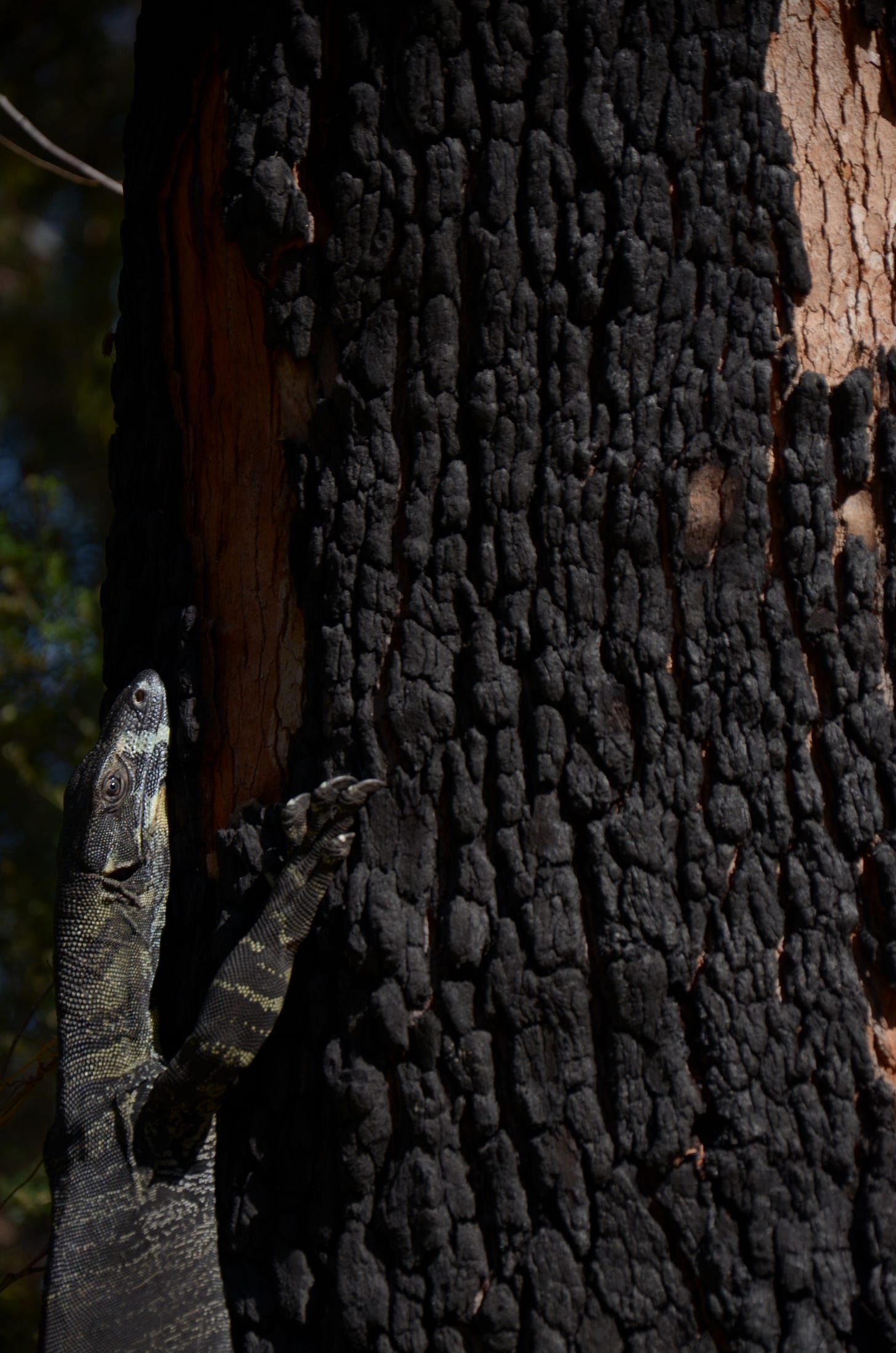
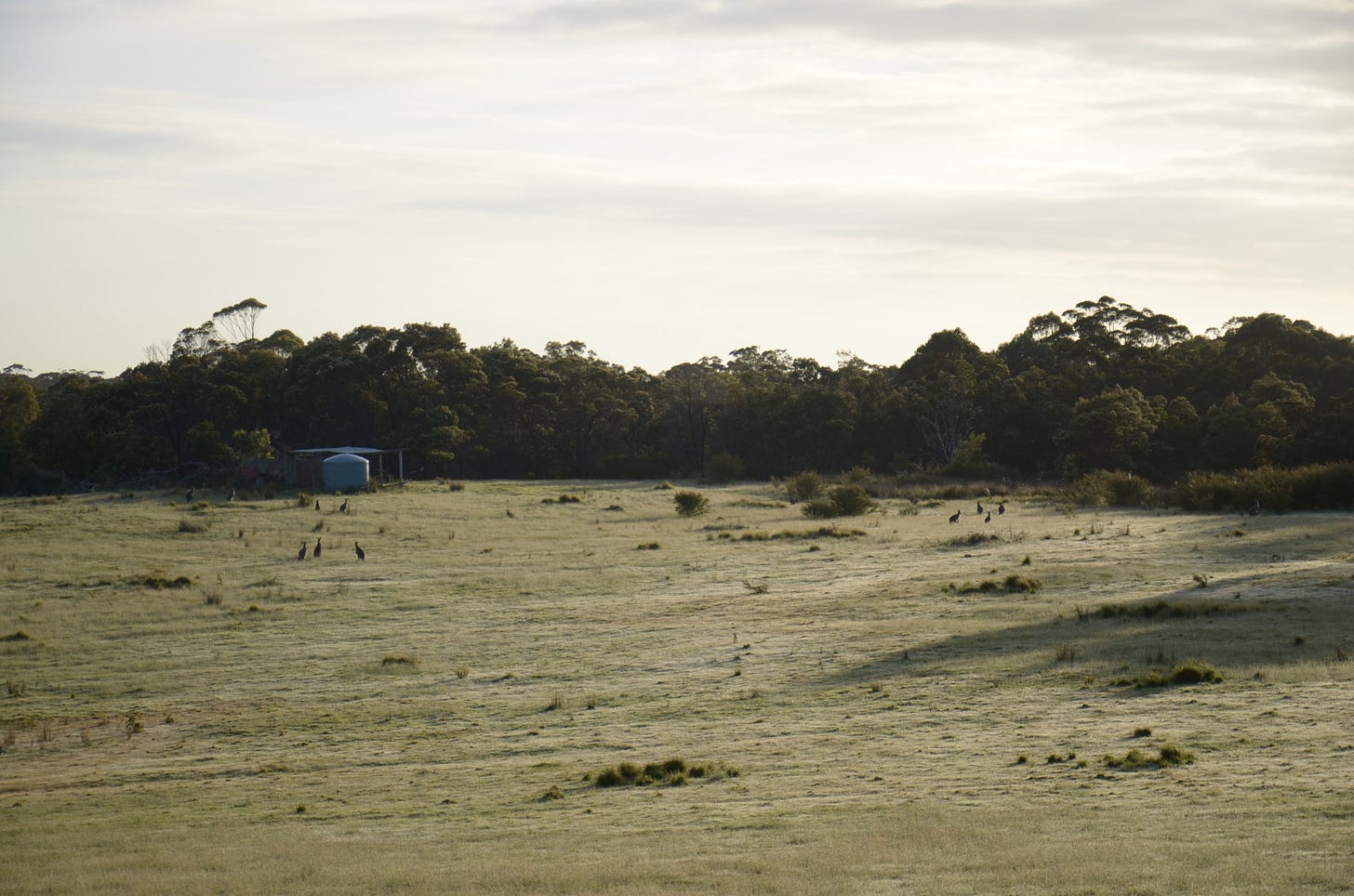
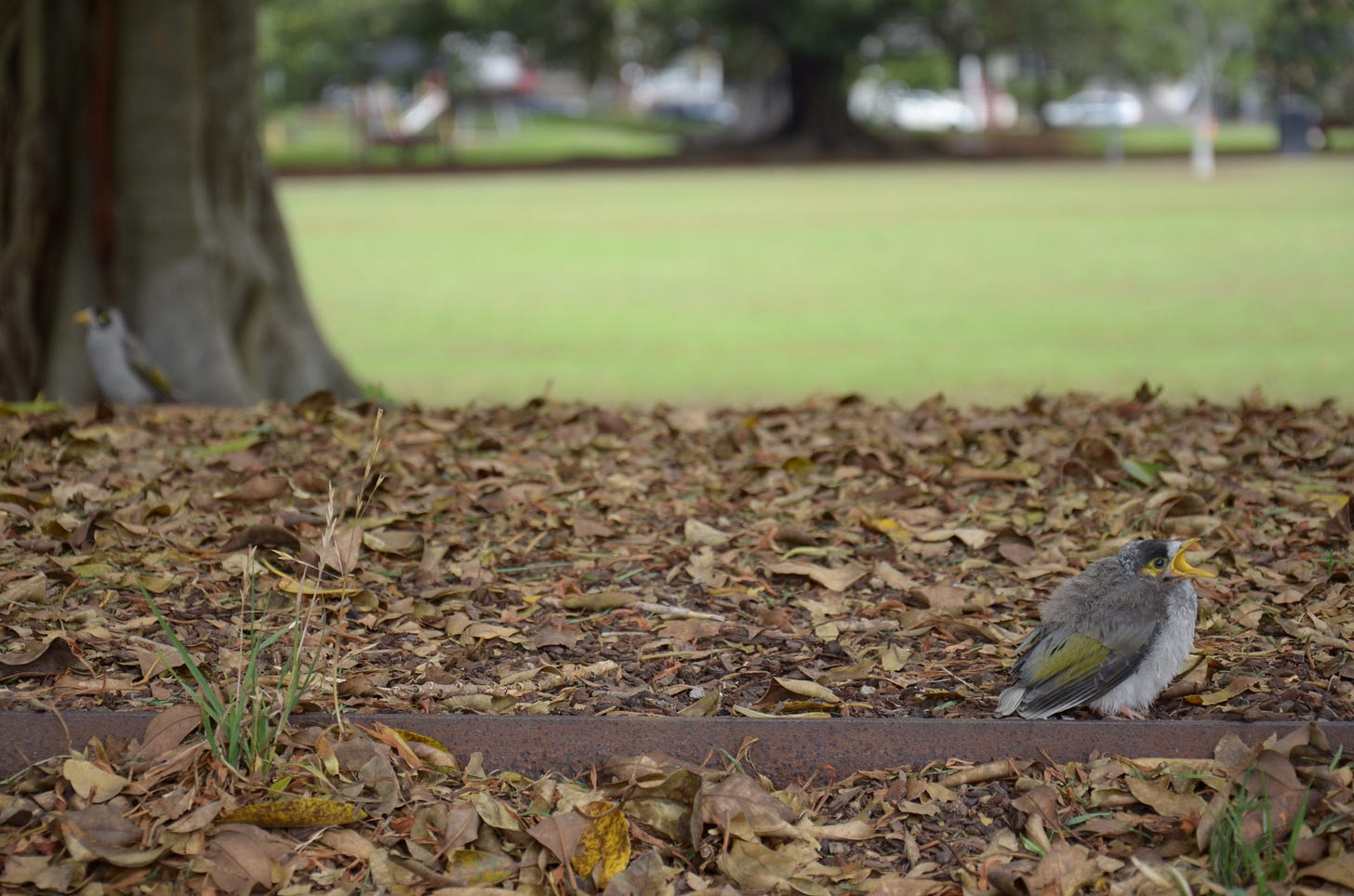
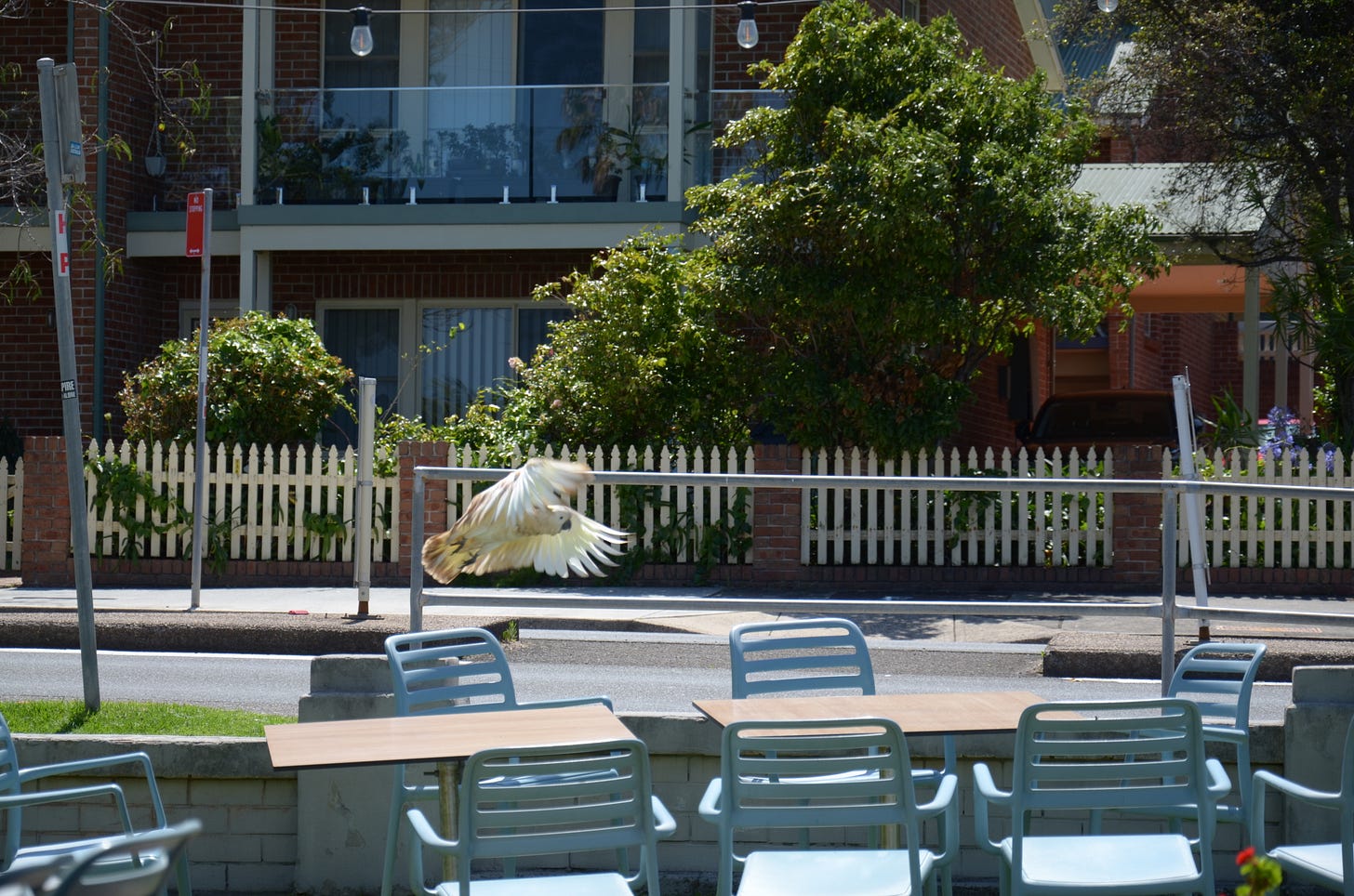
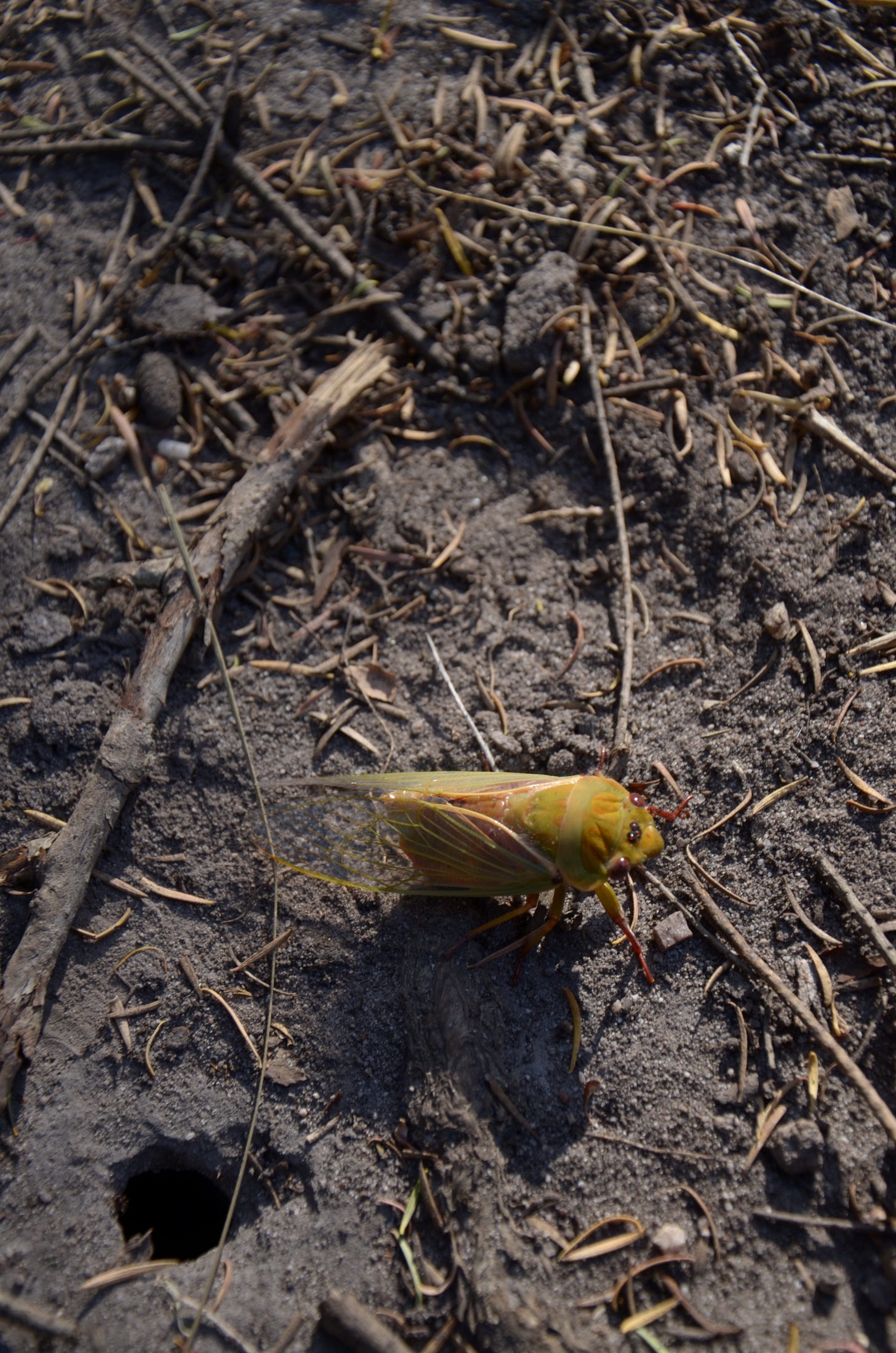
Beautiful writing again.
I too am aghast at the idea of bright pink crosses spray-painted on dead animals. I understand the reason. I’m thinking it would be better to spray paint a smallish rock and place it beside the body. Same message but also a memorial.